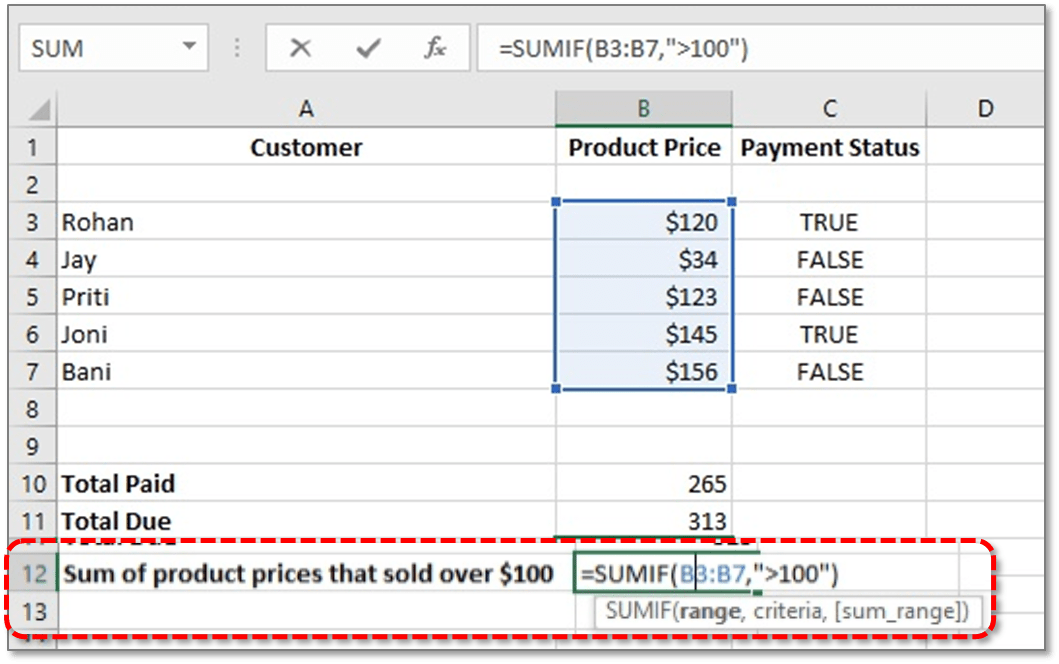Are you tired of manually adding up values from different worksheets in Excel? The SUMIF function is here to save the day! In this blog post, we’ll explore how to use the SUMIF function to easily calculate the sum of values from different worksheets in Excel. Whether you’re a beginner or an experienced user, mastering this powerful function can streamline your data analysis and reporting processes. Let’s dive in and discover how the SUMIF function can make your Excel experience more efficient and productive.
How To Use Sumifs Function In Excel (6 Handy Examples)
The SUMIFS function in Excel is a powerful tool that allows you to sum values based on multiple criteria. To use the SUMIFS function, start by typing “=SUMIFS(” in a cell, then select the range of cells you want to sum. Next, enter the criteria range and criteria for each condition you want to apply. For example, to sum sales for a specific product in a specific region, you would enter the range of products, the specific product, the range of regions, and the specific region. Here are six handy examples of using the SUMIFS function: 1) Summing sales for a specific product in a specific region, 2) Summing expenses for a specific category in a specific month, 3) Summing hours worked by a specific employee on a specific project, 4) Summing inventory levels for a specific product in a specific location, 5) Summing customer orders for a specific product in a specific time period, and 6) Summing website traffic for a specific page on a specific day. With these examples, you can see how the SUMIFS function can be used to analyze and summarize data from different worksheets in Excel.

www.exceldemy.com
Sumif Function In Excel
The SUMIF function in Excel is a powerful tool for calculating the sum of values that meet specific criteria. It allows you to specify a range of cells to evaluate, a criteria to match, and a range of cells to sum if the criteria is met. One of the most useful features of the SUMIF function is its ability to work across different worksheets within the same workbook. This means you can easily calculate the sum of values from different worksheets based on specific conditions. By using the SUMIF function across multiple worksheets, you can streamline your data analysis and efficiently gather the information you need.

excelunlocked.com
Use Sumif Function In Excel =sumif(range, Criteria, Sum_range) With Example
The SUMIF function in Excel is a powerful tool that allows you to sum values in a range based on a specific criteria. The syntax for the SUMIF function is =SUMIF(range, criteria, sum_range), where “range” is the range of cells that you want to evaluate, “criteria” is the condition that must be met, and “sum_range” is the range of cells that you want to sum if the criteria is met. For example, if you have a list of sales data in one worksheet and a list of product names in another worksheet, you can use the SUMIF function to sum the total sales for a specific product. This can be incredibly useful for analyzing data from different worksheets and gaining insights into your business.

yodalearning.com
Excel Tutorial
In this Excel tutorial, we will explore the powerful SUMIF function and how it can be used across different worksheets. The SUMIF function is a valuable tool for adding up values based on specific criteria, and being able to apply it to multiple worksheets can greatly enhance its usefulness. We will delve into the step-by-step process of using the SUMIF function across different worksheets, providing clear examples and practical tips to help you master this essential Excel feature. By the end of this tutorial, you will have a solid understanding of how to effectively utilize the SUMIF function across different worksheets, enabling you to streamline your data analysis and reporting tasks in Excel.

www.youtube.com
Sumifs Function: Adding With Criteria 36 Examples & Sumif Function
The SUMIFS function in Excel is a powerful tool for adding up values based on multiple criteria. With the ability to handle up to 36 criteria, this function allows users to specify the conditions that must be met for each cell to be included in the sum. This makes it incredibly versatile for analyzing data across different categories or attributes. In addition, the SUMIF function is another useful tool for adding values based on a single criterion. When used in combination with different worksheets, these functions can provide a comprehensive solution for aggregating and analyzing data from multiple sources in Excel.

www.youtube.com